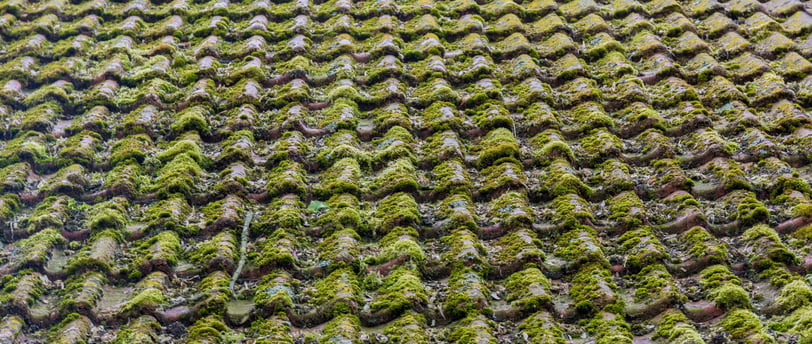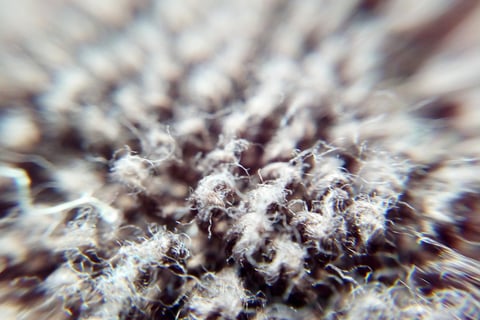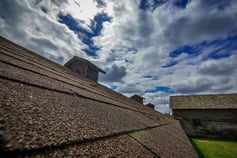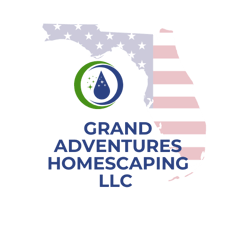Contact: 689-346-9844 Email: info@grandadventureshomescaping.com
Is It Worth Having Your Roof Cleaned?
6/11/20258 min read


Understanding Roof Damage
Roofs, particularly shingle roofs, are subject to a wide range of damage over time due to various environmental factors. One of the primary causes of roof deterioration is wear and tear, which can occur gradually. Commonly, exposure to sunlight leads to UV deterioration, causing shingles to become brittle and prone to cracking. Additionally, constant moisture from rain and Florida's humidity can lead to the growth of mold and algae, further compromising the integrity of roofing materials.
Weather conditions significantly impact roof health. For instance, heavy winds can dislodge shingles or cause them to curl, leaving the underlying structure exposed to potential leaks. This cyclical process exacerbates existing damage and can result in costly repairs if not addressed promptly.
Neglect plays a critical role in accelerating roof deterioration as well. Homeowners may overlook small issues like loose shingles or minor leaks, which can evolve into significant problems over time. Regular inspections and preventative maintenance are essential to ensure the longevity of the roof. Visual examples of damaged roofs often reveal cracks, curling edges, and missing shingles, all of which signal the need for timely intervention.
Ultimately, understanding the types of damage that roofs can sustain is crucial for homeowners. Mold and mildew are caused by a bacteria called Gleocapsa Magma which can destroy a roof by eating the limestone coating. This also presents a health risk to humans who occupy the dwelling because of the mold and mildew that are present. By recognizing the signs of wear and tear, being mindful of weather impacts, and implementing a proactive maintenance strategy, homeowners can mitigate risks associated with roof damage. This approach not only preserves the functionality of the roof but also extends its overall lifespan, offering greater peace of mind and financial savings in the long run.
The Detrimental Effects of Mold and Mildew
Mold and mildew are types of fungi that thrive in damp, warm environments. They reproduce by releasing spores that can easily spread throughout the air and settle on surfaces, including roofs. Mold typically appears as black, green, or grey patches, while mildew is often seen as a white or tan powdery substance. Both mold and mildew can flourish on roofs where moisture accumulates, such as in shaded areas, or where organic debris, such as leaves and twigs, promotes dampness. Conditions that foster their growth include humidity levels above 60%, which is prevalent in the state of Florida, poor ventilation, and lack of direct sunlight.
The presence of mold and mildew on roofs is not just an aesthetic issue; it can have significant implications for both the property and the health of its inhabitants. Mold spores can penetrate the building, leading to indoor air quality issues. Exposure to these spores can result in a range of health concerns, particularly for individuals with pre-existing respiratory conditions, allergies, or weakened immune systems. Common health problems associated with mold exposure include persistent cough, nasal congestion, eye irritation, skin rashes, and even more severe reactions such as asthma attacks.
Furthermore, mold and mildew can contribute to the deterioration of roofing materials. Prolonged exposure can weaken shingles and cause structural damage, leading to costly repairs or even roof replacement. Therefore, maintaining a clean roof is crucial to preventing a mold infestation and safeguarding both your home and health. Regular cleaning services can help mitigate the risks and extend the lifespan of your roofing materials while ensuring a healthier living environment. In light of these factors, addressing roof cleanliness is not merely optional but essential for a safe and well-maintained home.
Identifying Harmful Organisms: Gleocapsa Magma and Lichens
Homeowners often underestimate the presence of various harmful organisms that can thrive on their roofs, leading to significant issues over time. Two common examples of such organisms are Gleocapsa magma and lichens. These organisms can cause considerable degradation of roofing materials, thus posing a serious concern for property maintenance.
Gleocapsa magma is a type of cyanobacteria, often identified by its dark, greenish-black stains on roofing surfaces. This organism typically inhabits humid environments and thrives in areas with inadequate sunlight. The presence of Gleocapsa magma on roofs can lead to the deterioration of shingles, as it retains moisture, creating an environment that may foster more severe decay. Moreover, this organism can disrupt the ability of the roofing material to reflect sunlight, ultimately affecting energy efficiency.
Lichens, on the other hand, are complex organisms formed from a symbiotic relationship between fungi and algae. While they may appear harmless or even attractive on the roof’s surface, lichens can inflict damage on roofing materials over time. They establish a stronghold through root-like structures that penetrate the shingles, leading to cracks and eventual leaks. The propensity for lichens to retain moisture further exacerbates the risk of mold growth, which can affect not only the roof but also the structural integrity of the entire home.
Identifying these harmful organisms early is critical for effective roof maintenance. Homeowners should regularly inspect their roofs for signs of Gleocapsa magma and lichens. By addressing these issues promptly, one can prevent further damage and costly repairs, ensuring the longevity of the roofing system. By understanding the role that these organisms play, homeowners can make informed decisions regarding the necessity of roof cleaning services and safeguard their investments.
The Process of Roof Cleaning
The process of roof cleaning is crucial to maintaining the longevity and appearance of a roof. Various techniques are employed to ensure that a roof remains free from damaging elements like algae, moss, and grime. Each method has its own advantages and disadvantages, making it essential to choose the appropriate cleaning technique based on the type of roofing material and the extent of the buildup.
One of the most common methods for roof cleaning is pressure washing. This technique involves using a high-pressure water spray to remove dirt and debris directly from the roof's surface. While effective, pressure washing can pose risks, especially for delicate roofing materials such as shingles, which may become damaged under high pressure. Additionally, without proper technique, water can seep beneath the roofing material, leading to potential leaks.
In contrast, chemical treatments involve applying specialized cleaning agents designed to break down organic material such as moss and algae. This method is often gentler on the roof and effective in preventing future growth. However, care must be taken to select eco-friendly solutions and ensure that the chemicals do not harm surrounding vegetation or nearby structures. Following the application, the roof may still require rinsing to remove residue.
Manual scrubbing is another viable option, especially for smaller areas or localized stains. This technique uses brushes or scrubbing tools to physically remove the buildup. While labor-intensive, it provides more control over the cleaning process. Like chemical treatments, manual scrubbing poses lower risks to delicate roofing materials but may require considerable effort and time.
For optimal results, many homeowners choose to hire professionals who are trained in roof cleaning. Professional services possess the necessary equipment and experience to safely perform the task while minimizing risks associated with various cleaning methods. By understanding the available techniques and their implications, homeowners can make informed decisions regarding roof maintenance.
Cost vs. Benefits of Roof Cleaning
Investing in roof cleaning is a decision that many homeowners face, weighing the associated costs against the myriad benefits. On average, professional roof cleaning can cost between $300 and $600, depending on factors such as the size of the roof, the type of materials, and the severity of the buildup. While this initial cost may seem steep, the long-term benefits often overshadow the upfront expense.
One of the primary advantages of having a clean roof is the extension of the lifespan of roofing materials. Accumulated debris, algae, and moss can deteriorate shingles and other roofing components, potentially leading to premature replacements. Regular cleaning mitigates such risks, allowing homeowners to maximize the life of their investment. By investing in regular cleaning services, one can avoid costly repairs or roof replacement every 15 to 20 years, thus realizing significant savings in the long run.
Additionally, a clean roof can enhance energy efficiency in the home. When dirt and algae block sunlight and airflow, roofing materials may not reflect heat as effectively, leading to higher energy bills due to increased heating and cooling demands. A clean, well-maintained roof can optimize energy efficiency, translating into lower utility bills over time. By improving thermal performance, homeowners experience reduced energy consumption and costs.
Furthermore, regular roof cleaning can prevent the occurrence of leaks, which can again be financially devastating. By proactively maintaining the roof, homeowners can identify potential issues before they escalate into expensive repairs. This preventive approach ultimately contributes to the overall value of the property, making it a sound financial consideration.
In conclusion, while the costs associated with roof cleaning can vary, the financial benefits associated with maintaining a clean roof often justify the expense. By considering aspects such as longevity, energy efficiency, and the avoidance of costly repairs, homeowners can make informed decisions about the necessity of routine roof cleaning.
How Often Should You Clean Your Roof?
Maintaining a clean roof is essential for the longevity and integrity of a home. However, the frequency with which homeowners should consider cleaning their roof is influenced by several factors, including location, climate, and roof type. Each of these elements plays a significant role in determining how often roof cleaning should be undertaken to ensure optimal performance and appearance.
Location is a critical factor; for instance, homes situated near large trees may require more frequent cleaning due to falling leaves, branches, and other debris. In contrast, properties in arid or less vegetated areas may experience less accumulation, allowing for longer intervals between cleanings. Additionally, if a home is located in a region prone to high humidity and rainfall, it may be more susceptible to mold and mildew growth, necessitating more frequent attention.
The climate also significantly impacts roof cleaning frequency. In colder climates, winter conditions can lead to ice and snow buildup, which may require more regular inspections and potential cleaning as warmer weather approaches. Conversely, in warmer environments, algae and moss growth can accelerate, prompting homeowners to schedule roof cleaning more often, perhaps annually or bi-annually.
The type of roofing material is another essential consideration. Asphalt shingles often accumulate debris, whereas metal or tile roofs may resist buildup. Homeowners should also be attentive to visual cues, such as discoloration, streaks, or overall dirtiness, as these indicate when cleaning is necessary. As a best practice, regular maintenance checks should be integrated into a home’s upkeep schedule, ideally aligning with seasonal changes to promote optimal conditions for roof care.
In summary, homeowners should evaluate their specific circumstances to determine the appropriate frequency for roof cleaning, factoring in their location, climate, and the materials used in their roofing system to maintain the roof's condition effectively.
Making the Decision: Is it Worth It?
As homeowners contemplate the necessity of roof cleaning, it is essential to weigh various factors influencing the value of this investment. One must consider the specific conditions of their roof, such as its age, material, and overall health. Roofs that are frequently exposed to environmental elements, such as debris, moss, or algae, are more prone to deterioration. Regular cleaning can prolong the life of the roof and prevent costly repairs in the long run, which adds significant financial value to the home.
Additionally, the health advantages associated with a clean roof cannot be overlooked. Accumulated dirt and biological growth may contribute to air quality issues, potentially affecting the well-being of residents. By proactively removing these hazards, homeowners can create a healthier living environment, thus enhancing the quality of life. This aspect is particularly crucial for families with allergies or respiratory issues, who may be sensitive to the contaminants residing on an unclean roof.
It is also beneficial to consider local climate factors. Regions with high humidity or frequent rainfall can experience accelerated growth of moss and algae, making regular roof maintenance an essential practice. By engaging professional roof cleaning services, homeowners can ensure their roofs are not just aesthetically pleasing but also structurally sound and free from damaging elements.
Ultimately, the decision of whether roof cleaning is worth the investment will vary for each individual. Homeowners are encouraged to assess their circumstances, including the condition of their roof, potential health considerations, and financial implications. Educating oneself on the benefits of maintaining a clean roof will help inform this important decision. Taking action now can lead to significant advantages for both the home and its inhabitants in the future.




Services
Expert soft washing, paver sealing and landscaping for your property.
CONTACT US
SUBSCRIBE TO OUR NEWSLETTER!
contact: info@grandadventureshomescaping.com
© 2025. All rights reserved.
